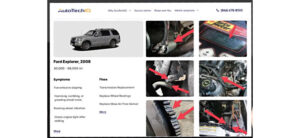While early adopters have embraced EVs, automakers still have work to do when it comes to bringing mainstream consumers into the EV revolution
Automakers are taking a leadership role in sustainability by making efforts to reduce carbon emissions in their manufacturing process. With the proliferation of battery-electric vehicles (BEVs) and plug-in hybrid electric vehicles (PHEVs), the transformation from traditional internal combustion engines to EVs is already underway with some 4.3 million new BEVs and PHEVs delivered in the first half of this year, a 62-percent increase compared to the first half of 2021.

While early adopters have embraced EVs, automakers still have work to do when it comes to bringing mainstream consumers into the EV revolution — particularly when it comes to addressing higher up-front vehicle prices, limited driving range per charge and lengthy charging times. To gain wider acceptance, market share and profitability, automakers have prioritized lightweighting, which can be most easily accomplished by increasing aluminum content of their EVs, both in the structure and components.
Lightweighting with aluminum improves vehicle efficiency, is more cost effective, provides for greater performance and safety, and is ultimately, reduces carbon emissions during the use phase. Aluminum, already the fastest growing automotive material, is expected to grow to content levels of nearly 260 kgs (570 lbs) per vehicle (PPV) by 2030, a 24-percent increase over the decade.
Three arguments for using aluminum:
Battery Efficiency — Using Lightweighting to Counter the Laws of Physics
Batteries in BEVs, the fastest growing segment of the electric vehicle market, are heavy and the most expensive part of the vehicle. The heavier the vehicle, the bigger the battery, the more it costs, and the more power that is required to move it — that’s just physics. Lighter vehicles use less energy to do the same task, whether it’s fuel in internal combustion engine vehicles or electricity in BEVs.
Lightweight BEVs are quicker to charge and have better efficiency and potentially smaller battery packs, which means they drive farther between charging stations with the same amount of energy or can carry more passengers and cargo while maintaining range.
In addition to looking at lightweighting battery packs, automakers are looking at reducing the weight of all primary systems, such as motors and brakes, all of which come with cost reductions that help offset any material cost increase of lightweight materials, resulting in secondary mass savings.
The Lighter the Vehicle, the Better the Performance and Safety
For all kinds of vehicles, lightweighting with aluminum provides better handling in the form of better acceleration, more responsive steering, quicker braking, less load on brakes and suspension, and the capacity to tow and carry more.
Aluminum has excellent corrosion resistance and is self-healing, forming a protective oxide barrier when cracked, dented, or deformed. It has better in-service dent resistance and can be used blank, without paint or coatings. In comparison, steel will corrode over time, with or without a protective coating. Durability translates into cost savings, with vehicles that last longer and require less maintenance.
In the event of a crash, aluminum absorbs more energy than steel per kilogram, and with its superior crash crush properties can withstand multiple blows, such as a rollover. High-strength steel does not absorb energy like aluminum. That is why more vehicle front and side crash structures are being made with aluminum.
Lower CO2 Emissions and Smaller, Lighter Batteries are Better for the Environment
Because a lighter vehicle can utilize a smaller battery pack, negative environmental impacts associated with the manufacturing of large batteries can be reduced. We can reduce carbon emissions in automotive aluminum by adding closed-loop recycling into the parts manufacturing process, ensuring any scrap is segregated and sent back to the material supplier for use in the next material supply. Several manufacturers are already doing this. The practice not only reduces manufacturing waste and emissions, but makes great business sense, and can be implemented relatively easily as automakers switch from steel to aluminum.
It is not surprising that aluminum is the fastest-growing automotive material. Automotive startups and manufacturers of electric vehicles are making aluminum their first material of choice, while legacy automakers are responding to changing habits and environmental challenges by designing tomorrow’s automobiles with aluminum at their core.
The reason is obvious: aluminum makes better vehicles — more efficient, better performing, safer, and more sustainable. Aluminum is more durable, corrosion resistant, handles energy absorption in a crash better, is fully recyclable, strong, and lightweight.
To learn more about the benefits of lightweighting with aluminum, we invite you to read our whitepaper.









Comments are closed.